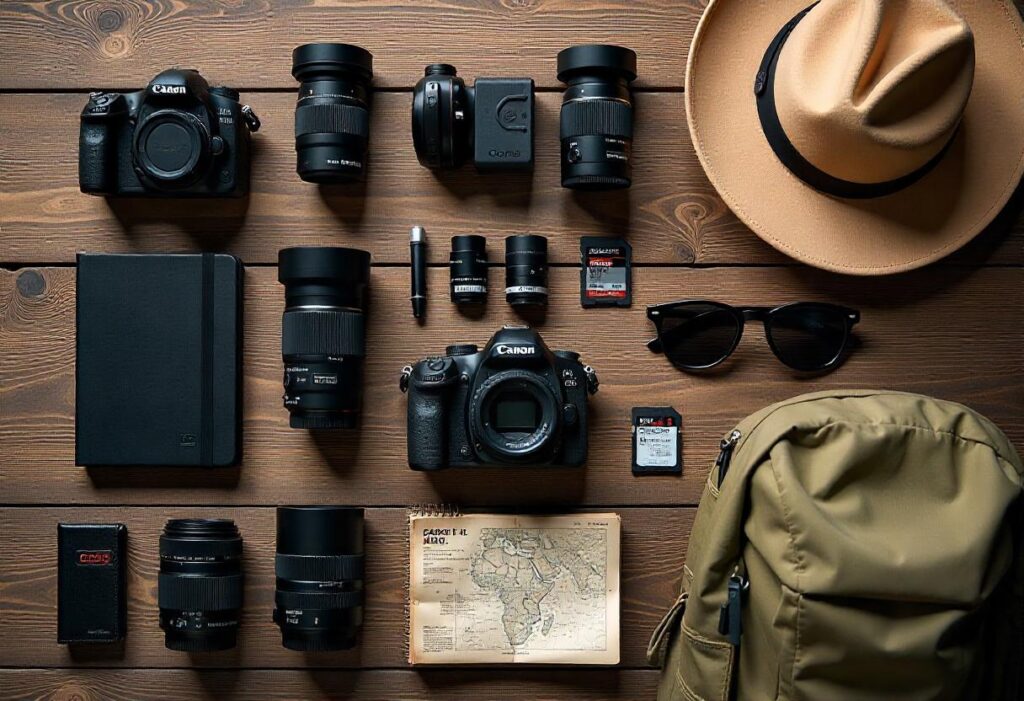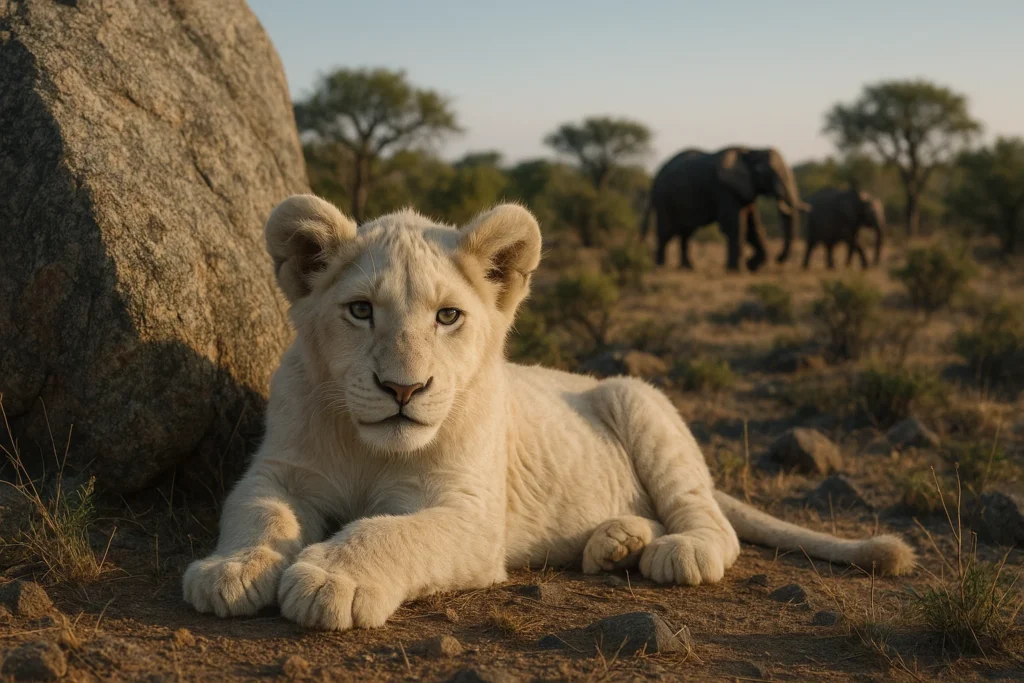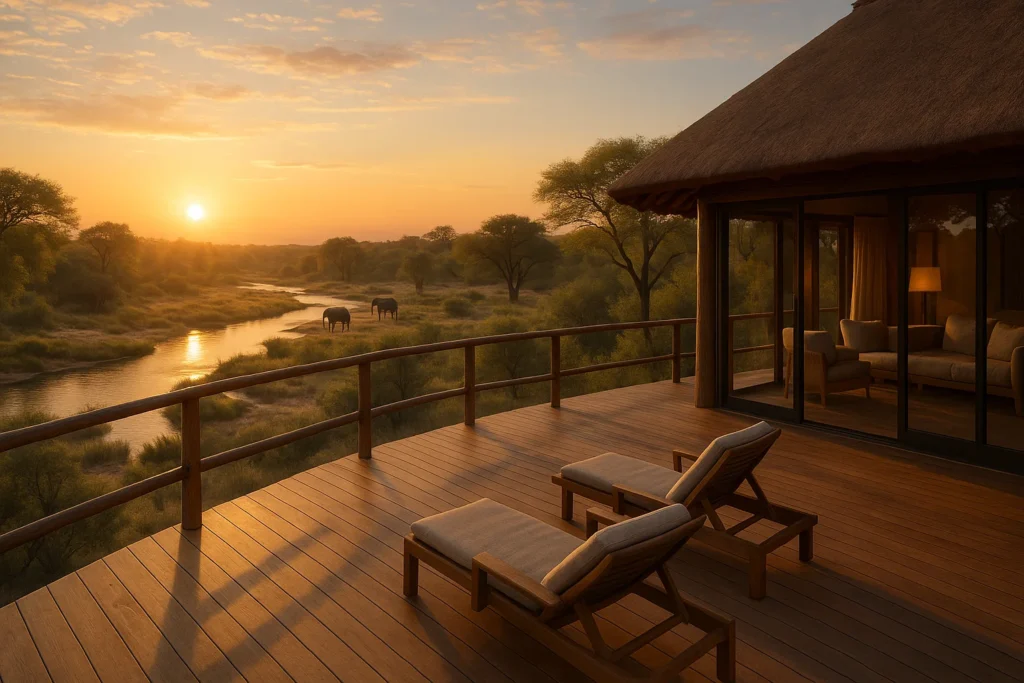Capturing the magic of an African safari requires more than just a good eye—it requires the right gear. Whether you’re a seasoned wildlife photographer or a casual traveler hoping to bring home stunning memories, packing smart can make the difference between a blurry shot and a once-in-a-lifetime image. This guide breaks down the must-haves, the nice-to-haves, and a few pro tips to help you make the most of your photo safari.
Essential camera gear for safari photography
A DSLR or mirrorless camera with interchangeable lenses
While smartphone cameras have improved, they can’t match the flexibility and power of a DSLR or mirrorless system—especially when it comes to zoom range and image quality in low light.
- Recommended brands: Canon, Nikon, Sony, Fujifilm
- Minimum specs: Fast autofocus, good ISO performance, and burst mode for action shots
Telephoto lens (at least 300mm)
Animals won’t always be close to your vehicle. A telephoto lens is crucial for bringing distant wildlife into sharp focus.
- Ideal range: 100–400mm or 150–600mm
- Stabilization: Optical image stabilization helps with handheld shots
Extra batteries and memory cards
Long game drives mean you’ll be away from charging points for hours. Safari photographers often shoot hundreds of frames per day.
- Bring 2–3 fully charged batteries
- Carry multiple SD cards with at least 64–128 GB each
Protective camera bag
Dust and bumpy rides are a given on safari. A padded, dustproof camera bag or backpack keeps your gear safe and organized.
Nice-to-have items (but worth it if you can)
Wide-angle lens
Perfect for landscapes, sunsets, or animals in their environment. Adds variety to your shots.
- Recommended: 16–35mm or 24–70mm lenses
Beanbag or window mount
Tripods are often impractical in vehicles. A beanbag helps stabilize your camera when shooting from the window or roof.
- Lightweight and easy to pack
- Great for sharp images at slower shutter speeds
Backup camera body
If you’re serious about photography, having a second camera body saves time switching lenses and provides a safety net if one fails.
External hard drive or storage solution
If you’re shooting RAW, your files will pile up fast. Consider backing up your files each night at camp to avoid losing irreplaceable photos.
What not to bring (or reconsider)
- Tripods: Unless you’re on a walking or private photo safari, tripods are rarely usable in safari vehicles.
- Drones: Banned in most national parks and reserves across Africa.
- Overly large gear: Huge telephoto primes (e.g., 600mm f/4) are heavy and cumbersome in vehicles unless you’re on a dedicated photographic safari.
Bonus tips for safari photographers
Choose the right camera settings for wildlife
- Use shutter priority (Tv/S mode) to freeze motion
- Keep ISO on Auto but set a max to avoid noise
- Use continuous autofocus (AI Servo/AF-C) for moving subjects
Pack for dust and weather
- Bring a lens cleaning kit, microfiber cloths, and ziplock bags
- A rain cover or weather-sealed gear is helpful in rainy seasons
Don’t forget to enjoy the moment
Sometimes it’s best to put the camera down and take in the sights. Some of your favorite safari memories may be those you didn’t photograph.
Final thoughts: build your kit around your goals
Ultimately, the best safari camera gear is the gear you’ll use confidently. Prioritize portability, versatility, and protection. If you’re aiming for professional-level images, invest in long lenses and fast cameras. If you’re a beginner or hobbyist, even a single zoom lens on a mid-range camera can deliver spectacular results.
FAQs
A 100–400mm or 150–600mm telephoto lens is ideal for wildlife, allowing close-ups from a safe and respectful distance.
Not usually. A beanbag or window mount is more practical inside safari vehicles.
You can, especially for landscapes and camp life, but it’s limited for distant animal shots. A zoom lens or clip-on telephoto helps.
Use a dustproof bag, avoid frequent lens changes, and clean your gear daily with a microfiber cloth and blower.
It’s common to take 500–1,000 shots per day, especially if you shoot in burst mode or RAW. Bring ample memory and storage.






